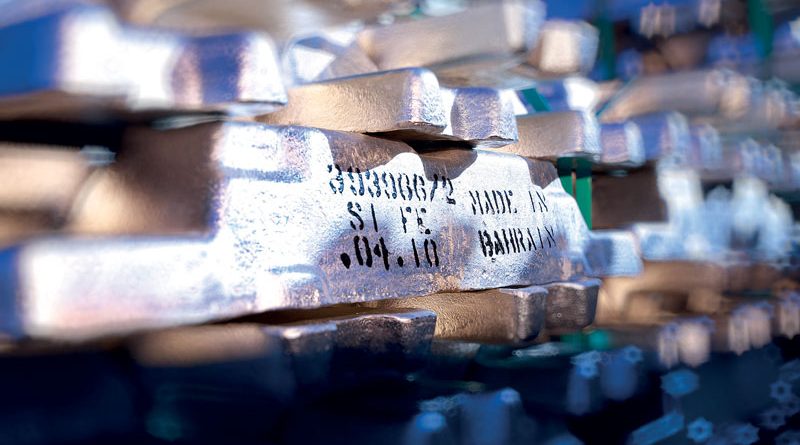The Global Production of Primary Aluminium
The global consumption of aluminium is constantly on the increase, but the production of primary metal is gradually moving eastward and the number of producers is increasing
by Mario Conserva
The localisation of primary aluminium production has dramatically changed over the last 20 years: the role of China has increased substantially to the detriment of North America, East and Central Europe, and West Europe, according to World Aluminium, the production of primary aluminium in China has risen more than tenfold in the period 2000-2017 (see Table 1). The primary production also increased in the other Asian countries (+78 percent), in the Gulf Cooperation Council countries (+89 percent) and Africa (+43 percent).
Apart from access to abundant and relatively cheap energy resources in particular in western and north-western regions, primary production has been moving to China also as a result of industrial policies adopted in the last few years and related to provincial subsidies, exchange rates and trade policies.
The European countries’ (including European Union and the Rest of Europe) market share in global primary production of unwrought aluminium fells from 30 percent in 2000 to roughly 12 percent in 2017, although production volumes slightly increases from 7.5 million tonnes in 2000 to 7.8 million tonnes in 2017. In 2017, ca 71 percent of primary aluminium was produced outside Europe and North America, while the latter countries had produced ca 55% in 2000 (Figure 1). In total, around 63.4 million tonnes of aluminium were produced worldwide in 2017. As shown in Figure 2, China overtook all the other countries in primary production in 2012, and now, globally, it accounts for about 57 percent of production volumes.
The primary aluminium industry has been historically characterised by high concentration level. In 2017, although the arrival of numerous new players from developing countries reduced the degree of concentration at global level over the last four decades, the top 10 unwrought aluminium producing companies account for roughly 53 percent of the total production output.
As can be expected, the last few years have seen Chinese companies grow exponentially. Nowadays, the China Hongqiao Group is the largest aluminium smelter in the world with an annual production of 7.5 million tons in 2017 (see Figure 3). Hongqiao Group as well as other large aluminium companies in China (such as Chalco, Shandong Xinfa, SPIC, and East Hope) reported increases in unwrought aluminium primary production in the last year notwithstanding the shutdown of several aluminium projects to comply with the national supply-side reform of aluminium industry. The first non-Chinese companies is UC Rusal, the largest aluminium producing company of the Russian Federation, with a total aluminium production of 3.7 million tonnes in 2017. In the same year, the Norwegian company Norsk Hydro ASA is the Western Europe’s largest producer of aluminium by output (2.1 million tonnes).
Primary aluminium production in Europe
Within the described framework, the decline of primary aluminium production has been particularly severe in the European Union over the past few years (see Figure 4). Since 2008, primary production of primary aluminium shrank by 30 percent. Moreover, some primary aluminium producing countries, such as Italy (Portovesme, 2014), UK (Lynemouth, 2012), and Netherlands (Vlissingen, 2011) have definitively ceased their production in the last few years as a result of high energy costs, coupled with falling aluminium prices and lower demand by major customers, especially the automotive and construction sectors. It is worth noting that in 2009, total vehicle production in EU was lower than 22.3 percent compared to 2008 and the output of construction decreased by 8.2 percent. Aluminium price slumped almost 50 percent since its peak in spring 2008 and recovery started in early 2009. Nowadays, only 10 EU28 countries have aluminium smelters in any form (commodity ingots and value added products, such as slabs, billets, foundry alloys, and wire rods). In terms of geographical distribution of production, Germany, France, and Spain are the three countries with the largest share of production. In 2017, they produced about 60 percent of primary aluminium in EU28 (compared to 46 percent in 2008). It is worth noting, however, that these three countries represent just the 2.0 percent of the global primary production of unwrought aluminium (see Table 2).
References (tables and figures)
“The EU aluminium industry, trade policies and the competitiveness of the downstream sector”, Gruppo di Ricerche Industriali e Finanziarie GRIF – “FABIO GOBBO”, LUISS GUIDO CARLI UNIVERSITY, Rome, November 2018

